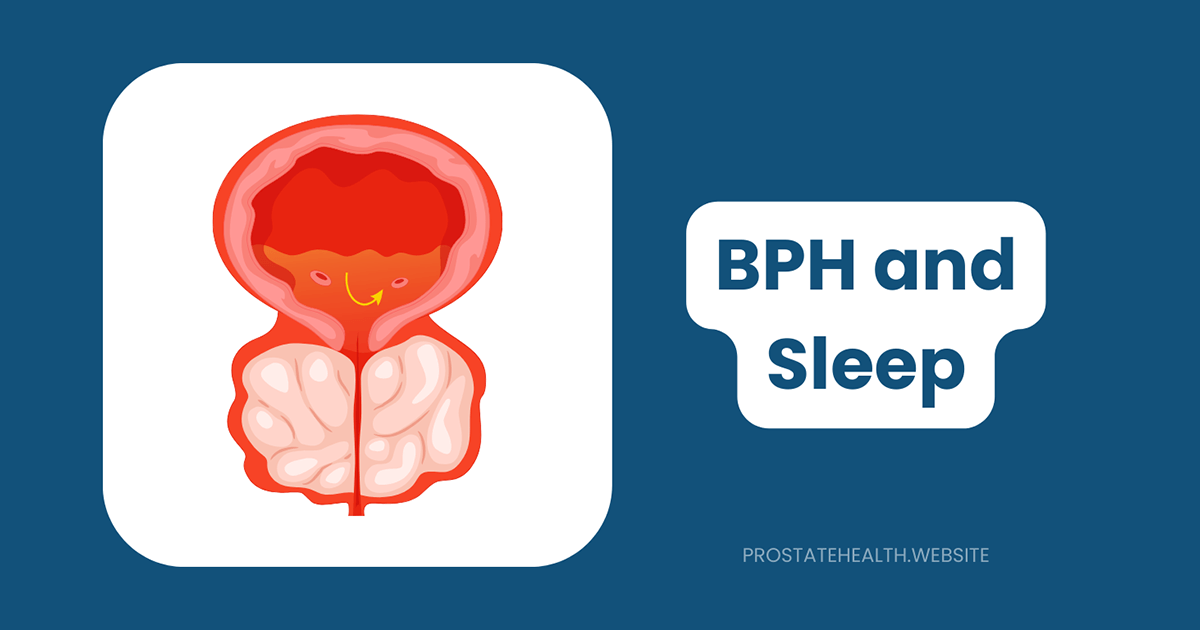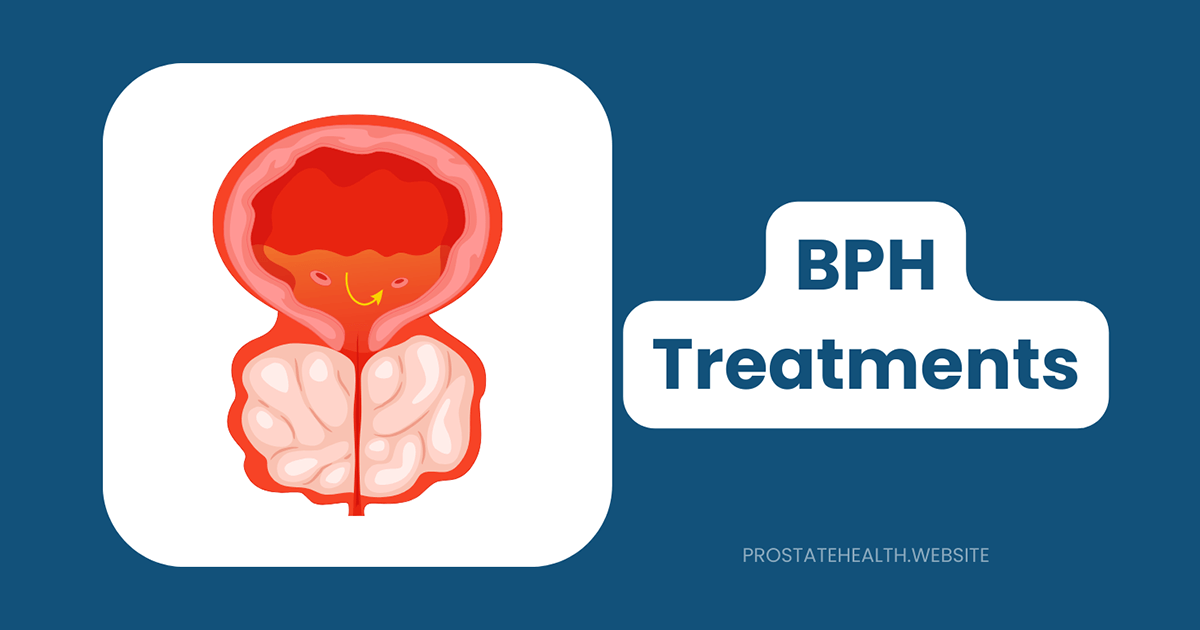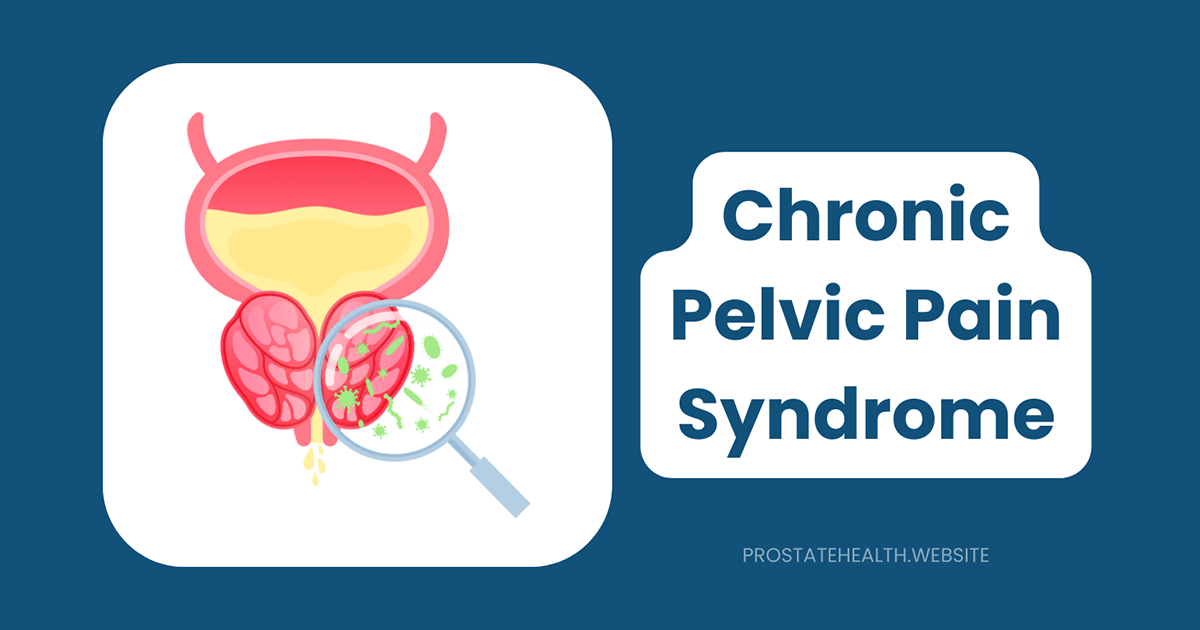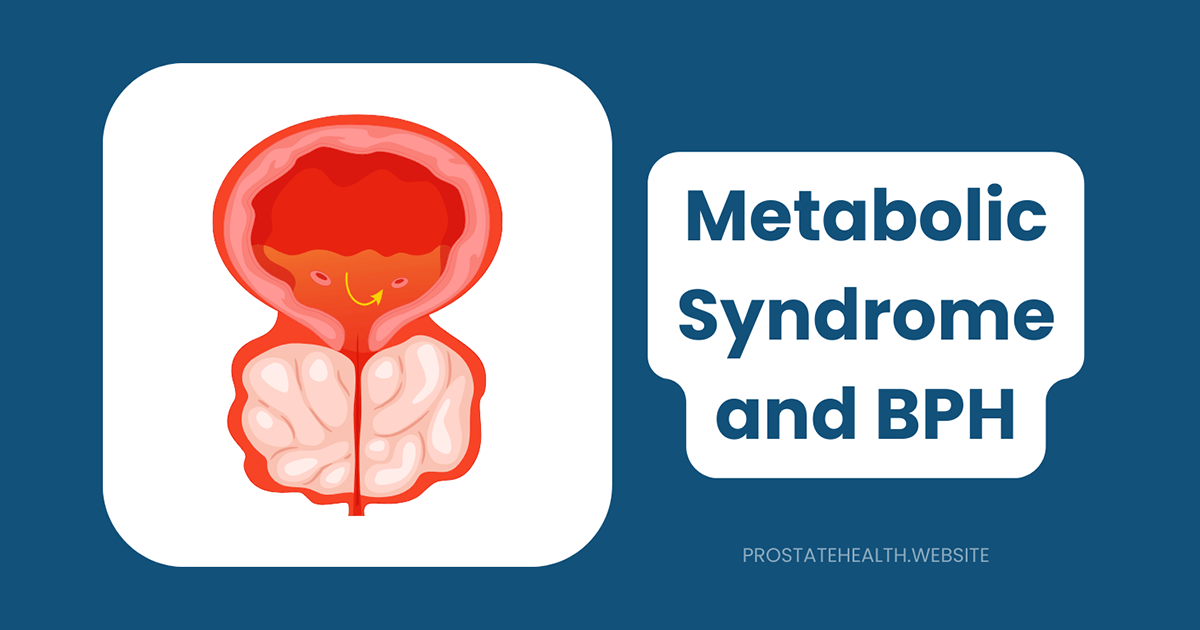Localized Prostate Cancer: Treatment Options and Outcomes
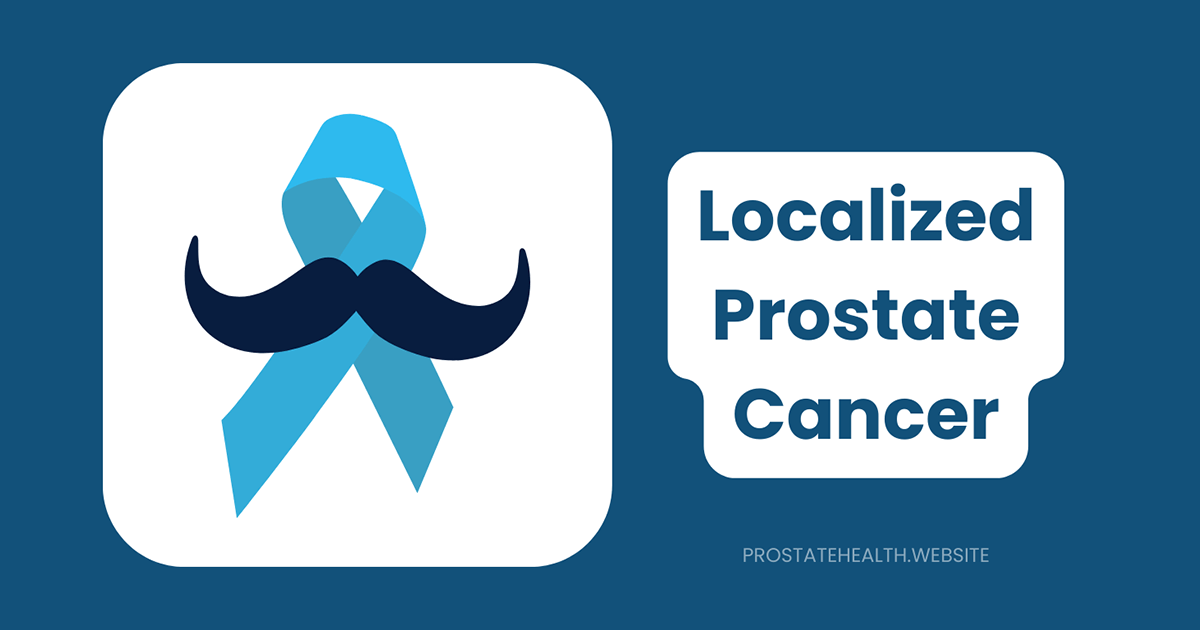
Receiving a diagnosis of localized prostate cancer—cancer that’s confined to the prostate gland and hasn’t spread to other parts of the body—can be overwhelming. Yet this diagnosis also brings a silver lining: you have time to carefully consider your options, and the prognosis is generally excellent with appropriate treatment.
As someone who has guided countless men through their prostate cancer journeys, I’ve witnessed firsthand how empowering it can be when patients truly understand their treatment options and likely outcomes. This knowledge transforms anxiety into confidence and helps you become an active participant in your care decisions.
In this comprehensive guide, we’ll explore the full spectrum of treatment options for localized prostate cancer, examine the latest research on outcomes, and provide the information you need to make informed decisions about your care.
Understanding Localized Prostate Cancer
Before diving into treatment options, it’s important to understand what localized prostate cancer means and how it’s classified.
What Is Localized Prostate Cancer?
Localized prostate cancer refers to cancer that is contained within the prostate gland and has not spread to nearby lymph nodes, bones, or other organs. It corresponds to clinical stages T1 and T2 in the TNM staging system:
- Stage T1: Cancer not detectable by digital rectal exam (DRE) or visible on imaging; often found through PSA testing or incidentally during other procedures
- Stage T2: Cancer confined to the prostate but detectable by DRE or visible on imaging
Risk Stratification: Not All Localized Prostate Cancer Is the Same
Localized prostate cancer is typically categorized into risk groups that help guide treatment decisions:
Very Low/Low Risk
- Gleason score ≤ 6 (Grade Group 1)
- PSA 20 ng/mL
- Clinical stage T3-T4
Dr. James Thompson, urologic oncologist at Metropolitan Cancer Center, explains: “Risk stratification is crucial because it helps us determine which treatments are most appropriate. A man with low-risk disease might be an excellent candidate for active surveillance, while someone with high-risk disease will likely need more aggressive intervention.”
The Full Spectrum of Treatment Options
The good news about localized prostate cancer is that you have multiple effective treatment options. Let’s explore each one in detail:
Active Surveillance: Monitoring with Intent to Treat
Active surveillance isn’t “doing nothing”—it’s a structured monitoring program that allows men with low-risk prostate cancer to delay or avoid treatment and its potential side effects.
What It Involves
- Regular PSA tests (typically every 3-6 months)
- Digital rectal exams (typically every 6-12 months)
- Periodic prostate biopsies (typically every 1-3 years)
- Possible MRI imaging
- Immediate intervention if the cancer shows signs of progression
Ideal Candidates
- Men with very low or low-risk prostate cancer
- Some men with favorable intermediate-risk disease
- Men who prioritize avoiding treatment side effects
- Men with significant comorbidities or limited life expectancy
Outcomes
Recent long-term studies show excellent results with active surveillance:
- 10-year prostate cancer-specific survival: >98%
- 15-year prostate cancer-specific survival: >95%
- Approximately 30-50% of men on active surveillance eventually require treatment
However, a 2025 study highlighted that only 11% of patients adhere to published guidelines for active surveillance, indicating a gap between recommendations and real-world practice.
Radical Prostatectomy: Surgical Removal of the Prostate
Radical prostatectomy involves removing the entire prostate gland and seminal vesicles, and sometimes nearby lymph nodes.
Surgical Approaches
- Open Radical Prostatectomy: Traditional approach through an incision in the lower abdomen
- Laparoscopic Radical Prostatectomy: Minimally invasive approach using small incisions and specialized instruments
- Robot-Assisted Laparoscopic Prostatectomy: Surgeon controls robotic arms to perform the procedure with enhanced precision
Ideal Candidates
- Men with at least a 10-year life expectancy
- Men with intermediate or high-risk disease
- Younger men who may benefit from long-term cancer control
- Men who prefer the psychological benefit of complete tumor removal
Outcomes
- Cancer Control: 10-year biochemical recurrence-free survival ranges from 75-85% for low and intermediate-risk disease to 60-70% for high-risk disease
- Recovery Time: Hospital stay typically 1-2 days; return to normal activities within 3-6 weeks
- Common Side Effects: Urinary incontinence (usually temporary) and erectile dysfunction (varies based on age, pre-operative function, and nerve-sparing technique)
Robert, 62, shares his experience: “I chose robotic prostatectomy because I wanted the cancer completely removed. Recovery wasn’t as difficult as I expected—I was back to most activities within a month. I did have some urinary leakage initially, but with pelvic floor exercises, that resolved within three months. Erectile function took longer to return, but with medication, I’ve regained satisfactory function.”
Radiation Therapy: Using Radiation to Kill Cancer Cells
Radiation therapy uses high-energy rays or particles to kill cancer cells. There are several approaches:
External Beam Radiation Therapy (EBRT)
- Intensity-Modulated Radiation Therapy (IMRT): Precisely shapes radiation beams to the prostate while minimizing exposure to surrounding tissues
- Image-Guided Radiation Therapy (IGRT): Uses imaging during treatment to ensure precise targeting
- Stereotactic Body Radiation Therapy (SBRT)/Stereotactic Ablative Radiotherapy (SABR): Delivers higher doses of radiation in fewer sessions (typically 5 treatments over 1-2 weeks)
- Proton Therapy: Uses protons rather than x-rays to deliver radiation with potentially fewer side effects
Brachytherapy (Internal Radiation)
- Low-Dose-Rate (LDR) Brachytherapy: Permanent implantation of radioactive “seeds” into the prostate
- High-Dose-Rate (HDR) Brachytherapy: Temporary placement of radioactive sources into the prostate
Combination Approaches
- External beam radiation plus brachytherapy “boost”
- Radiation plus hormone therapy (particularly for intermediate and high-risk disease)
Ideal Candidates
- Men of any age with localized prostate cancer
- Men who wish to avoid surgery
- Men with medical conditions that make surgery risky
- Men for whom preserving urinary continence is a high priority
Outcomes
- Cancer Control: Similar to surgery for low and intermediate-risk disease
- A 2025 study on SABR showed excellent long-term results with 10-year biochemical failure rates of only 7.7% and prostate cancer-specific survival of 99.2%
- Recovery Time: No hospitalization required; fatigue may persist during and shortly after treatment
- Common Side Effects: Urinary symptoms (frequency, urgency), bowel irritation, erectile dysfunction (typically gradual onset)
Focal Therapy: Targeting Only the Cancerous Areas
Focal therapy aims to treat only the areas of the prostate containing significant cancer while preserving the rest of the gland.
Types of Focal Therapy
- High-Intensity Focused Ultrasound (HIFU): Uses ultrasound waves to heat and destroy cancer cells
- Cryotherapy: Freezes and thaws cancer cells to cause cell death
- Focal Laser Ablation: Uses precisely targeted laser energy to destroy cancer cells
- Irreversible Electroporation (IRE): Uses electrical pulses to destroy cancer cells while sparing surrounding structures
- TULSA (Transurethral Ultrasound Ablation): MRI-guided ultrasound delivered through the urethra
Ideal Candidates
- Men with well-defined, unilateral tumors (on one side of the prostate)
- Men seeking to minimize side effects of whole-gland treatment
- Men willing to undergo continued monitoring after treatment
Outcomes
- Cancer Control: Emerging long-term data; generally good for properly selected patients
- Recovery Time: Typically quick, with most men returning to normal activities within days
- Common Side Effects: Generally milder than whole-gland treatments; may include temporary urinary symptoms
Dr. Sarah Chen, radiation oncologist specializing in prostate cancer, notes: “Focal therapy represents an exciting middle ground between active surveillance and whole-gland treatment. The key is proper patient selection and thorough pre-treatment imaging to ensure all significant cancer is targeted.”
Hormone Therapy: Reducing Testosterone Levels
While not typically used as a primary treatment for localized prostate cancer, hormone therapy (also called androgen deprivation therapy or ADT) may be combined with radiation therapy for intermediate or high-risk disease.
Types of Hormone Therapy
- LHRH Agonists/Antagonists: Medications that reduce testosterone production
- Anti-androgens: Block the action of testosterone on prostate cancer cells
- Androgen Receptor Pathway Inhibitors: Newer medications that block testosterone’s effects more completely
Role in Localized Disease
- Short-term (4-6 months) or long-term (18-36 months) ADT may be combined with radiation for intermediate or high-risk disease
- Not typically used with surgery except in very high-risk cases
- Rarely used as primary therapy except in men who cannot undergo other treatments
Outcomes When Combined with Radiation
- Improves cancer control and survival in intermediate and high-risk disease
- Common Side Effects: Hot flashes, fatigue, decreased libido, erectile dysfunction, muscle loss, bone density loss, metabolic changes
Comparing Outcomes: What the Research Shows
One of the most common questions men ask is: “Which treatment is best?” The answer depends on individual factors, but research provides valuable insights into comparative outcomes.
Cancer Control Outcomes
Low-Risk Disease
- Active Surveillance: >98% prostate cancer-specific survival at 10 years
- Surgery: >95% biochemical recurrence-free survival at 10 years
- Radiation Therapy: >95% biochemical recurrence-free survival at 10 years
- Focal Therapy: 80-90% freedom from clinically significant cancer in the treated area at 5 years
Intermediate-Risk Disease
- Surgery: 75-85% biochemical recurrence-free survival at 10 years
- Radiation Therapy: 75-85% biochemical recurrence-free survival at 10 years
- Radiation + Short-term ADT: Improved outcomes compared to radiation alone
High-Risk Disease
- Surgery + Possible Adjuvant Treatment: 60-70% biochemical recurrence-free survival at 10 years
- Radiation + Long-term ADT: 60-70% biochemical recurrence-free survival at 10 years
- Multimodal Approach: May provide best outcomes for very high-risk disease
Quality of Life Outcomes
Treatment effects on quality of life differ in timing and duration:
Urinary Function
- Surgery: Higher rate of urinary incontinence initially (5-30%), improving over 1-2 years
- Radiation: Lower rate of incontinence (1-5%) but higher rate of urinary irritation/frequency
- Focal Therapy: Generally lower impact on urinary function than whole-gland treatments
Sexual Function
- Surgery: Immediate decline with gradual improvement over 1-2 years; outcomes heavily dependent on age, baseline function, and nerve-sparing technique
- Radiation: Gradual decline over 1-2 years after treatment
- Focal Therapy: Generally better preservation of erectile function
Bowel Function
- Surgery: Minimal impact
- Radiation: May cause temporary or sometimes persistent rectal irritation, urgency, or bleeding
- Focal Therapy: Minimal impact
Michael, 58, who chose radiation therapy, shares: “The short daily treatments were easy, but I did experience some urinary frequency and mild bowel irritation during treatment. Most of these side effects resolved within a few months. My sexual function declined gradually over the first year, but with medication, I’ve maintained satisfactory intimacy with my wife. Five years later, my PSA remains undetectable.”
Latest Advances in Treatment
The field of prostate cancer treatment continues to evolve rapidly. Here are some of the most promising recent developments:
Advanced Imaging for Better Treatment Planning
- Multiparametric MRI: Provides detailed images of the prostate to identify suspicious areas and guide biopsies
- PSMA PET Scans: A game-changer for detecting even small amounts of prostate cancer; now recommended over conventional imaging for evaluating suspected recurrence
- MRI-Ultrasound Fusion Biopsy: Combines MRI and ultrasound images for more accurate biopsies
Refinements in Surgical Technique
- Retzius-Sparing Prostatectomy: A modified surgical approach that may better preserve urinary continence
- Advanced Nerve Monitoring: Helps surgeons better identify and preserve the nerves responsible for erectile function
- Single-Port Robotic Surgery: Allows the entire procedure to be performed through a single incision
Innovations in Radiation Delivery
- Ultra-Hypofractionation: Delivering the entire radiation course in just 5 treatments (SBRT/SABR)
- MRI-Guided Radiation: Real-time imaging during treatment for unprecedented precision
- Artificial Intelligence: Helping to optimize radiation treatment planning
Emerging Focal Therapy Approaches
- TULSA-PRO: MRI-guided transurethral ultrasound ablation showing promising results in clinical trials
- Irreversible Electroporation (NanoKnife): Preserves structures like nerves and blood vessels while killing cancer cells
- Focal Brachytherapy: Precisely placed radioactive sources to treat only the cancerous portion of the prostate
Dr. Robert Williams, urologic oncologist, observes: “The most exciting development I’ve seen in recent years is our ability to personalize treatment based on increasingly sophisticated risk assessment. We’re moving beyond simple risk groups to incorporate genomic testing, advanced imaging, and even artificial intelligence to tailor treatment to each individual patient.”
Making Your Decision: Factors to Consider
Choosing among treatment options is highly personal. Here are key factors to consider:
Cancer Characteristics
- Risk Category: Generally, higher-risk cancers require more aggressive treatment
- Tumor Location: Location within the prostate may influence treatment success and side effect risk
- Genomic Testing Results: Tests like Decipher, Prolaris, or Oncotype DX can provide additional information about how aggressive your cancer might be
Personal Factors
- Age and Life Expectancy: Younger men may prioritize long-term cancer control; older men may focus more on quality of life
- Overall Health: Existing medical conditions may make certain treatments more or less appropriate
- Personal Values and Preferences: Your priorities regarding side effects, treatment duration, and recovery time
- Lifestyle Considerations: How different side effect profiles might impact your specific work, hobbies, and relationships
Practical Considerations
- Access to Treatment Options: Some treatments may not be available at all medical centers
- Insurance Coverage: Coverage for newer treatments may vary
- Recovery Time: Different treatments require different time commitments and recovery periods
- Need for Retreatment: Some approaches have higher rates of needing additional treatment later
James, 65, reflects on his decision-making process: “After my diagnosis, I created a spreadsheet comparing treatments based on cure rates and side effects that mattered most to me. I’m an avid cyclist, so avoiding rectal side effects was important, which led me away from radiation. I ultimately chose surgery because I wanted the cancer completely removed and was willing to accept the risk of temporary incontinence. Having a structured way to compare options based on my personal priorities made the decision much clearer.”
Special Considerations for Different Risk Groups
For Very Low/Low-Risk Disease
The pendulum has swung strongly toward active surveillance for most men with low-risk disease. The 2024 AUA/ASTRO/SUO guidelines recommend:
- Active surveillance as the preferred approach for very low and low-risk prostate cancer
- Treatment only for men with low-risk disease who have a strong preference after thorough counseling
If treatment is chosen, options include:
- Radical prostatectomy
- Radiation therapy (external beam or brachytherapy)
- Focal therapy (in appropriate candidates)
For Intermediate-Risk Disease
For intermediate-risk disease, the decision becomes more nuanced:
- Favorable Intermediate-Risk: Active surveillance may be appropriate for selected patients
- Unfavorable Intermediate-Risk: Active treatment generally recommended
Treatment options include:
- Radical prostatectomy with possible pelvic lymph node dissection
- Radiation therapy (often with 4-6 months of hormone therapy)
- Combination of external beam radiation and brachytherapy
- Focal therapy in highly selected cases
For High/Very High-Risk Disease
For high-risk localized disease, multimodal treatment approaches are often recommended:
- Radical prostatectomy with extended pelvic lymph node dissection, possibly followed by adjuvant or salvage radiation
- External beam radiation with long-term (18-36 months) hormone therapy
- External beam radiation plus brachytherapy boost with hormone therapy
What If Treatment Fails? Understanding Recurrence and Salvage Options
Despite excellent outcomes with primary treatment, some men will experience cancer recurrence. Understanding the options if this happens can provide peace of mind.
Biochemical Recurrence
Biochemical recurrence refers to a rising PSA after treatment:
- After surgery: PSA ≥0.2 ng/mL
- After radiation: PSA rises 2 ng/mL above the lowest level achieved
Evaluating Recurrence
Modern imaging has revolutionized the evaluation of recurrent disease:
- PSMA PET Scans: Now recommended as the first-line imaging for suspected recurrence
- Multiparametric MRI: Particularly useful for evaluating local recurrence
- Prostate Bed Biopsy: May be recommended before salvage treatment
Salvage Treatment Options
After Failed Surgery
- Salvage Radiation Therapy: Most effective when given early (PSA <0.5 ng/mL)
- Hormone Therapy: May be added to radiation for higher-risk features
- Observation: For slowly rising PSA in older men or those with significant comorbidities
After Failed Radiation
- Salvage Prostatectomy: Challenging but potentially curative
- Salvage Focal Therapies: Cryotherapy, HIFU, or other ablative approaches
- Hormone Therapy: For men not suitable for local salvage treatment
Recent clinical trials (EMBARK and PRESTO) have shown benefits of combining androgen deprivation therapy with newer androgen receptor pathway inhibitors in biochemical recurrence cases.
Conclusion: Empowered Decision-Making
A diagnosis of localized prostate cancer presents both challenges and opportunities. The challenge lies in navigating the complex landscape of treatment options; the opportunity is that with localized disease, you have time to make a thoughtful, informed decision that aligns with your values and priorities.
Remember these key points as you consider your options:
- Most localized prostate cancer is not immediately life-threatening, allowing time for careful decision-making
- Multiple effective treatment options exist, each with different side effect profiles and recovery experiences
- Risk stratification is crucial for determining the most appropriate treatment approach
- Personal values and preferences should guide your decision alongside medical recommendations
- Advances in treatment continue to improve outcomes and reduce side effects
By working closely with your healthcare team, asking questions, and considering how different treatments align with your priorities, you can approach your prostate cancer journey with confidence and clarity.
Frequently Asked Questions About Localized Prostate Cancer Treatment
No single treatment is universally “best” for all men with localized prostate cancer. Studies comparing surgery and radiation show similar cancer control rates for comparable risk groups. The “best” treatment depends on your specific cancer characteristics, overall health, age, and personal preferences regarding potential side effects.
Active surveillance is generally most appropriate for men with very low or low-risk prostate cancer (Gleason 6, PSA <10, clinical stage T1-T2a). Some men with favorable intermediate-risk disease may also be candidates. Your doctor will consider factors like the number of positive biopsy cores, the percentage of cancer in each core, PSA density, and results of MRI or genomic testing when making recommendations.
All treatments for prostate cancer can potentially affect sexual function, though the timing, severity, and recovery patterns differ:
- Surgery typically causes immediate erectile dysfunction with gradual improvement over 1-2 years
- Radiation causes more gradual onset of erectile issues over months to years
- Focal therapies generally have less impact on erectile function
- Age, baseline function, and nerve preservation techniques significantly influence outcomes
Various treatments including medications, vacuum devices, and penile implants can help manage erectile dysfunction after prostate cancer treatment.
Recovery times vary by treatment:
- Active Surveillance: No recovery needed
- Surgery: Hospital stay of 1-2 days; catheter for 1-2 weeks; return to desk work in 2-4 weeks; full recovery in 4-6 weeks
- Radiation: No downtime during treatment; fatigue may persist for weeks after completion
- Brachytherapy: Usually outpatient procedure with 1-2 days of restricted activity
- Focal Therapy: Typically outpatient with 1-3 days of restricted activity
Yes, salvage treatment options exist if your initial treatment doesn’t cure the cancer. However, second treatments often carry higher side effect risks than initial treatments. This underscores the importance of carefully selecting your initial treatment approach.

